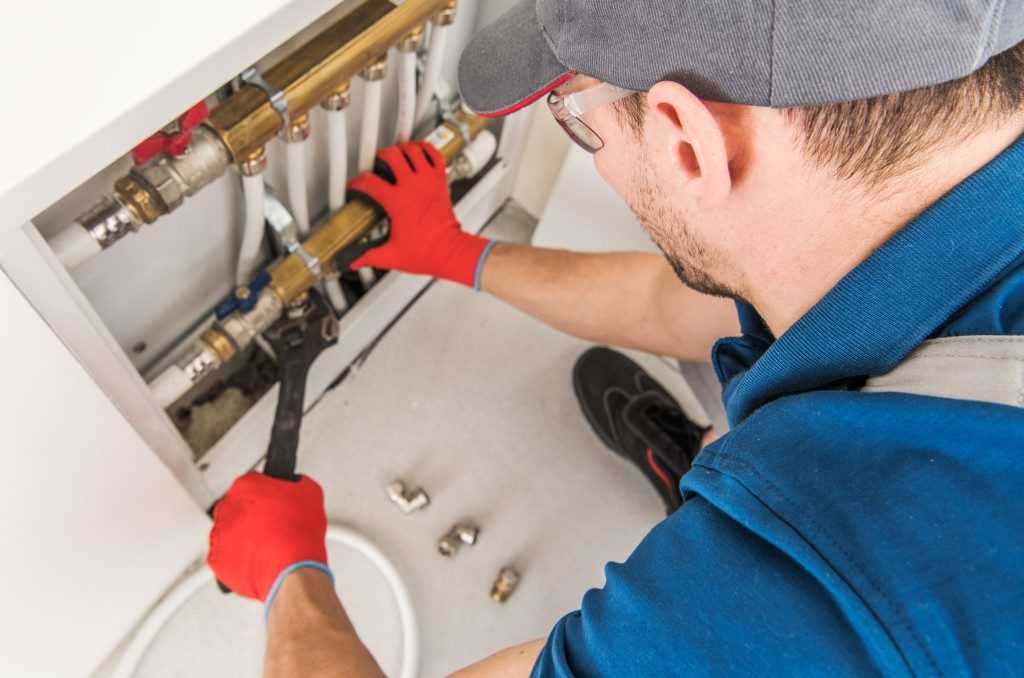Valves are forms of control devices designed to regulate the flow and pressure of air in system passageways. Pneumatic valves use the same principle by utilizing compressed air to automate the opening and closing of a pipe. Air passes through the valves and passageways during compression or release. Pushbuttons or toggle switches are also used to operate open or close these valves manually. It gives a machine’s user control over the length of time needed to open or close them.
These valves are also found in various industrial applications. Pneumatic valves help power devices such as pressure power tools and diesel engines. Each system is unique, and different types of pneumatic valves are also used. Here is a guide to help people pick the right valve for their needs.
The different types of pneumatic valves
Valves, paired with compressed air filters, are responsible for controlling the amount of air pressure in a pneumatic system. Without these valves, the entire system would not function properly. Knowing the different types of valves can help people find the right parts for their tools.
Dual In-line valve
Dual in-line valves are used when pressing clutches or operating brakes as a safety measure. They feature two in-line solenoids, a supply in-port, working out-port, and two exhaust ports. These valves also have separate internal, in-line pistons that cycle together to operate the valve. Palm buttons are connected to these valves, which an operator must press to cycle the machine. They also need to be at rest to cycle again. It is another safety feature to ensure the operator’s hands are not in harm’s way. Press stamps usually have dual in-line valves for a smoother operation.
Spring offset valve
It is another type of pipe that refers to the direction of its airflow when switched. In a two-way valve, for example, one valve is either open to enable airflow or closed to prevent airflow. A valve spool is moved by an actuator to let the ports open or close. A spring releases the valve spool to make the valve return to its starting position. Pneumatic valves that have these functions are classified as spring offset valves.
Two-way directional valve
This type of pipe allows air to flow in separate directions. Both ports can be opened or closed based on the need. It does not have a specific port or an exhaust. Examples of tools that use two-way valves are air tools and air motors.
Three-way directional valve
It is a type of pipe that has three ports, and each port serves a specific function. If the first and second ports are open, the air flows through the pipe, then to the device. If the first and third ports are open, the actuator acts as the exhaust vent. These valves are often connected to double-acting cylinders or cylinder actuators. Air brakes, single-action cylinders, and pneumatic lifts are only some of the machines using three-way directional valves.
Four-way directional valve
Four-way valves have a standard exhaust port, two working or output ports, and a supply or pressure port. The output ports are connected to actuators, while the pressure port pressurizes the airflow. The last port releases the valve’s exhaust. This type of pipe is commonly used in pneumatic systems because of its four-port feature. These ports allow the valve to reverse a primary cylinder or motor’s motion. Part grippers, air boosters, and actuators are some of the tools using four-way directional valves.
Important things to remember when selecting the right pneumatic valve
Valves are essential components of a pneumatic system. Searching for a pipe can be challenging, and choosing the correct pneumatic valve is crucial. This valve is responsible for controlling the pressure, rate, and direction of airflow into a system. If the pipe is too large, it is a waste of time and resources. If the valve is too tiny, its actuator will not function properly.
Here are some essential things to remember when selecting pneumatic valves:
-
Balance – each time a valve shifts, the same results must always happen. A machine filling water or soda bottles must always fill them at the same level. Glue dispensing machines should apply the right amount of glue on a particular spot every time. A suitable valve must be able to perform repetitive tasks at all levels.
-
Size of its orifice – a valve’s opening or hole is crucial because it prevents debris from clogging it. Check the manufacturer’s specifications to see if it is compatible with the machine. A 5-micron spec orifice is smaller than a 40-micron spec valve. Most problems occur when an ill-fitting valve is installed.
-
High shifting forces – reliable pneumatic valves have higher shifting forces. They can shift through different contaminants through their service lives. Shifting forces are measured by speed. Faster speeds result in higher shifting forces. These valves can function beyond their designated service lives.
A valve’s orifice size, balance, and shift forces are clear indications of a reliable pneumatic valve.
Pneumatic valves are essential pieces of equipment. They play a significant role in ensuring that machines run efficiently. Engine parts, wastewater recycling facilities, and even the International Space Station need pneumatic valves to function correctly. These valves help fine-tune a machine’s operation and handle even the most delicate of operations.




